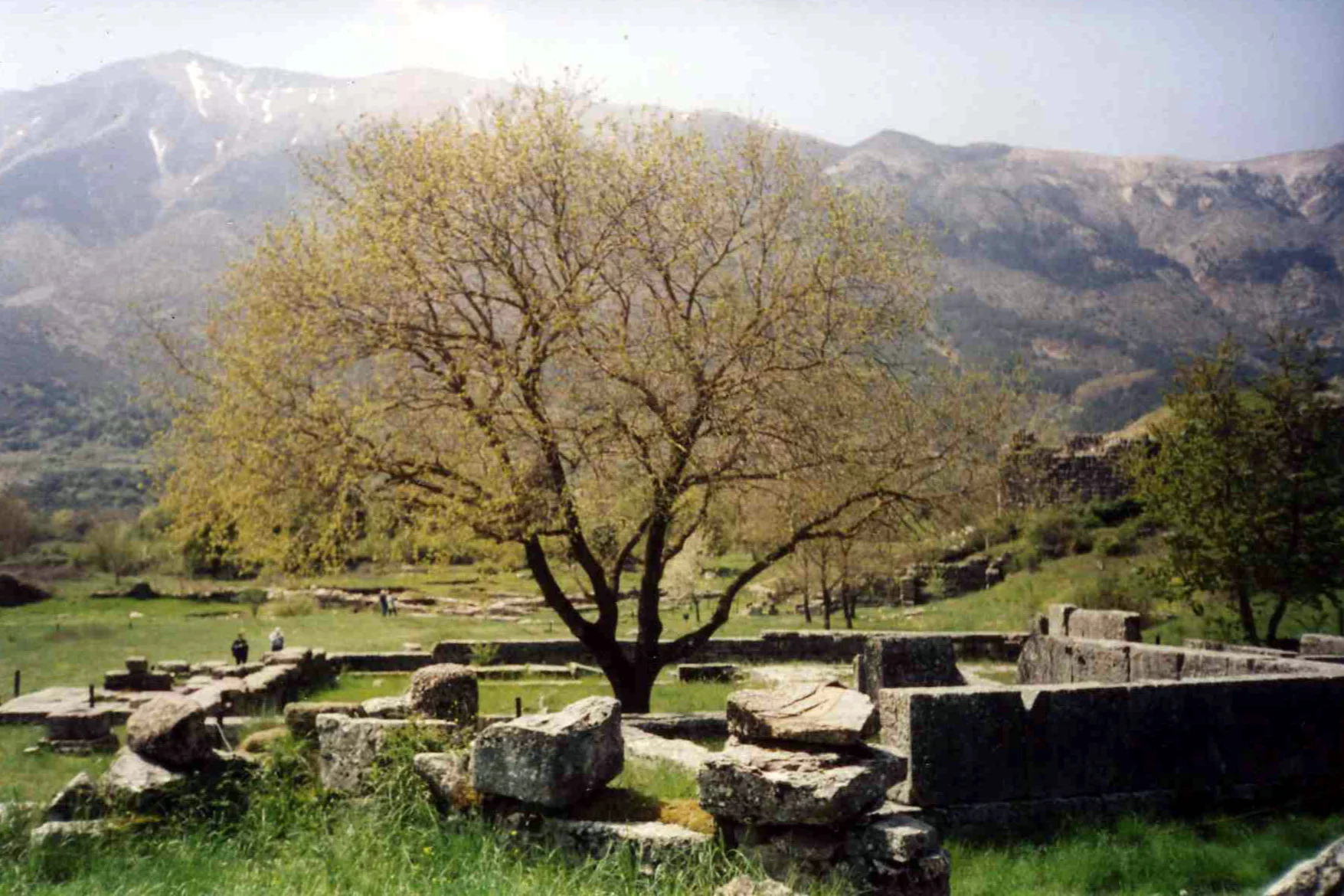Their secret cults help shape the way we think of what happens after death.
This story appears in the July 2016 issue of National Geographic magazine.
The world of ancient Greece was filled with gods, led by the towering Olympians—Zeus, Hera, Apollo, Poseidon, Athena, and other giants of mythology. Alongside worship of these divine inhabitants of Olympus were hundreds of cults focused on local deities and heroes.
PEOPLE PRAYED TO these gods for the same reasons we pray today: for health and safety, for prosperity, for a good harvest, for safety at sea. Mostly they prayed as communities, and through offerings and sacrifice they sought to please the inscrutable deities who they believed controlled their lives.
But what happens after death? In this, the ancients looked to Hades, god of the underworld, brother of Zeus and Poseidon. But Hades gave no reassurance. Wrapped in misty darkness, cut by the dread River Styx, the realm of Hades (“the unseen”) was, the poet Homer tells us, a place of “moldering horror” where ordinary people—and even heroes—went after they died.
Sympathetic interest in the human condition eventually led the Greeks to adopt new forms of religion and new cults. No longer seen as a joyless fate, the afterlife became more of a personal quest. Mystery cults, shrouded in secrecy, promised guidance for what would come after death. The mystery rites were intensely emotional and staged like elaborate theater. Those of the great gods on the Greek island of Samothrace took place at night, with flickering torch fire pointing the way for initiates. Guarded on pain of death, the rituals remain mysterious to this day.
Atlas of Belief
The roots of religion in Greece date back thousands of years. Religious sites were devoted to civic cults or local gods, as well as to Greek traditions: festivals, oracles, pilgrimages, and ceremonies. The mystery-cult rituals at Samothrace, for instance, lasted from the sixth century B.C. through the dawn of Christianity. Sacred places also commemorated the legendary dwellings of the gods, such as Olympus.
By the fourth century B.C., cults had emerged that claimed to offer purification by cleansing initiates of the stain of humanity. The foundations for new religions were falling into place. And when Christianity swept the ancient world, it carried with it, along with guidance from a single deity, remnants of the old beliefs: the washing away of human corruption through mystic rites, the different fates awaiting the initiated and uninitiated, and the reverence for sacred texts.
Moods of the Gods
As described by Homer, the gods and goddesses who ruled from Olympus possessed human traits such as lust, petulance, jealousy, and dishonesty. They also had a superhuman advantage: immortality.
Signs From Above
Greeks seeking guidance saw oracles as a direct line of communication with the divine. The gods’ answers to their questions came in different ways—obscure riddles, omens in the form of birds or lightning, even the rustle of leaves.
PROPHETIC, POETIC APOLLO
A son of Zeus, Apollo was the god of music, poetry, and song, of healing, and of prophecy. He typically was represented as a handsome youth and often carried a lyre or a bow. The stub of a bow may be what’s gripped in the statue’s left hand. This bronze likeness of Apollo was found in 1959 in Piraeus, Greece.
Left: Twilight bathes the ruins of the sanctuary of Athena Pronaia at Delphi and its tholos, a circular building. Pilgrims may have offered sacrifices here before consulting the oracle of Delphi at the nearby temple of Apollo.
Right: The oracle at Dodona, in Greece’s rugged northwest, was said to be the country’s first. Here mortals posed questions to Zeus through a sacred oak, while priests interpreted the answers.
PHOTOGRAPH BY DAVID COVENTRY
NATIONAL ARCHAEOLOGICAL MUSEUM, ATHENS
Musicians, a lamb for slaughter, and a woman holding altar utensils appear in this painting of a sacrificial procession. Religious ceremonies were among the few public events where women had roles.
PHOTOGRAPH BY VINCENT J. MUSI, ALEPOTRYPA CAVE, EPHORATE OF PALEOANTHROPOLOGY-SPELEOLOGY (LEFT) AND PHOTOGRAPH BY VINCENT J. MUSI (RIGHT)
Left: In southern Greece, this massive cavern known as Alepotrypa (Foxhole) Cave was home to a village dating back to the Neolithic period. Archaeological finds suggest that the cave was also a ritual site where people from around the Aegean came to bury their dead. Some 5,000 years ago, part of the cave collapsed, sealing its entrance. But the place apparently endured in memory, perhaps reinforcing legends of an underground realm of the dead.
Right: Ancient Greeks believed Charon the ferryman took souls to Hades across Acheron, the “river of woe.” Today the river—here colored by lights from a nearby bar—is popular among tourists and rafters.
GREECE'S CAVE OF RICHES
Known as the mythical gateway to Hades, Alepotrypa Cave is teeming with history—and bodies. Scientists have found more than 150 and counting. The Greeks premieres on PBS June 21 at 9 p.m.
Power of the Dead
Believing that the dead could exert bad or good influence from the afterlife, ancient Greeks sought their ancestors’ favor with honors and offerings. Many also believed that their own fate after death was directly related to their initiation into the right cults.
Which is better, life or the afterlife? In Homer’s Odyssey, the slain hero Achilles answers from the underworld: “I would rather serve as laborer to a serf, to a landless man who has no great livelihood, than rule all the perished dead.”
PHOTOGRAPH BY VINCENT J. MUSI
ARCHAEOLOGICAL SITE OF DION
The remains of a sanctuary of the Egyptian goddess Isis stand at the cult site of Dion, Greece, in the foothills of Olympus. It’s just one example of foreign influence on the area’s religious practices. Dion was a place of worship for people through Roman times.
Original article: nationalgeographic














